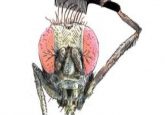What makes foxes foxy?

The fox genome has been published for the first time, and it’s set to increase our understanding of animal and human behavior.

The red fox has long been a model for animal behavior. For example, one long-term experiment in Russia has seen tameness or aggression selected for more than 40 generations, recreating the domestication of dogs and confirming a genetic contribution to behaviors.
Now, a team of international researchers has published the first-ever fox genome. This is already shedding further light on the genetic basis for behavior in various animals, including humans.
“In our previous work, we tried to identify regions of the fox genome responsible for tame and aggressive behavior, but these studies required a reference genome and all we could use was the dog genome,” commented Anna Kukekova (University of Illinois, IL, USA). “For us, the fox genome provides a much better resource for genetic analysis of behavior.”
The sequence was built from the genomes of 10 individuals from the Russian experiment. These included foxes bred for tame or aggressive traits, as well as non-selected ones.
When compared, the sequences from the three populations differed in 103 regions, with more divergence between the tame and conventional than the aggressive and conventional populations.
“Finding genomic regions at such resolution was beyond any expectations with our previous tools. Now, for the first time, we could not only pinpoint part of a chromosome which makes foxes more tame or aggressive, but we could identify specific genes responsible for it,” Kukekova explained.
Further research demonstrated there are similarities between the regions of interest in foxes and those in other mammals. For example in humans, a match was shown with a region associated with a syndrome resulting in extremely friendly behavior.
Kukekova noted: “Oddly enough, we found the Williams-Beuren region in aggressive foxes, not tame ones. We thought it would be the opposite.”
In another unexpected turn of events, they highlighted SorCS1, a gene involved in synapse function that had never before been linked with behavior. In the foxes, a version of the gene led to friendlier behavior.
These findings highlight how much research needs to be done to fully understand behavior. “The fox model expands the spectrum of behaviors that can be studied using animal models and provides insight into the evolution and regulation of mammalian social behaviors,” the authors concluded.





